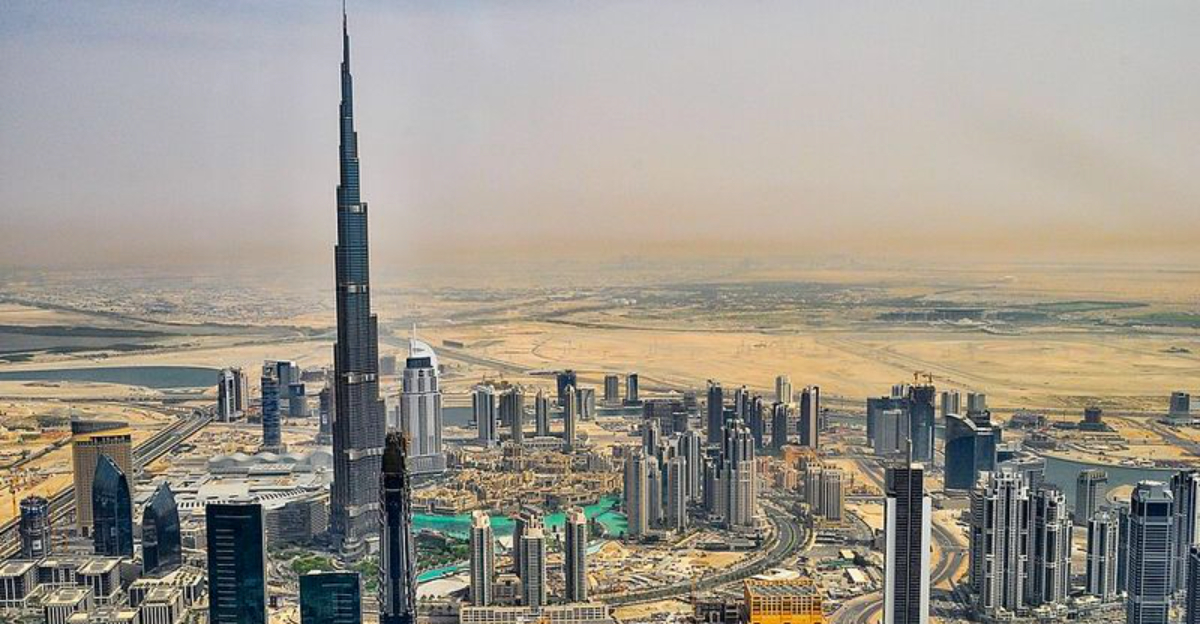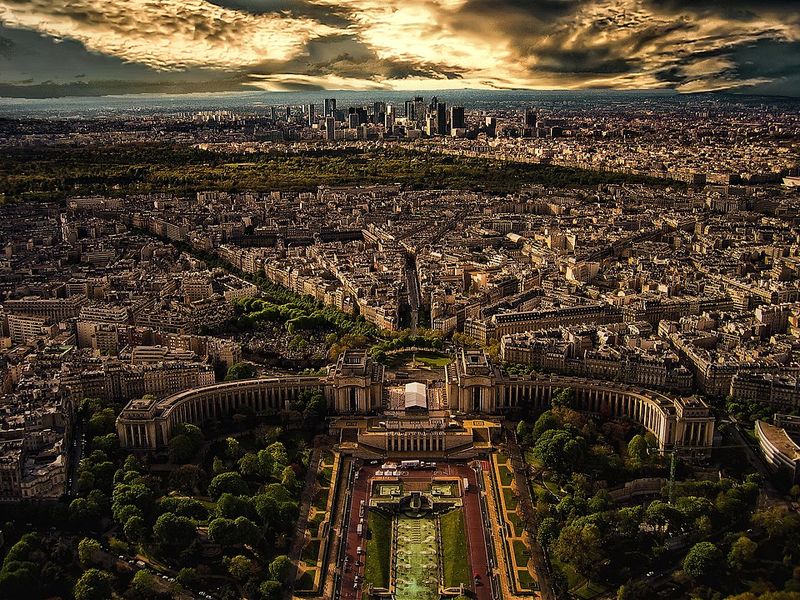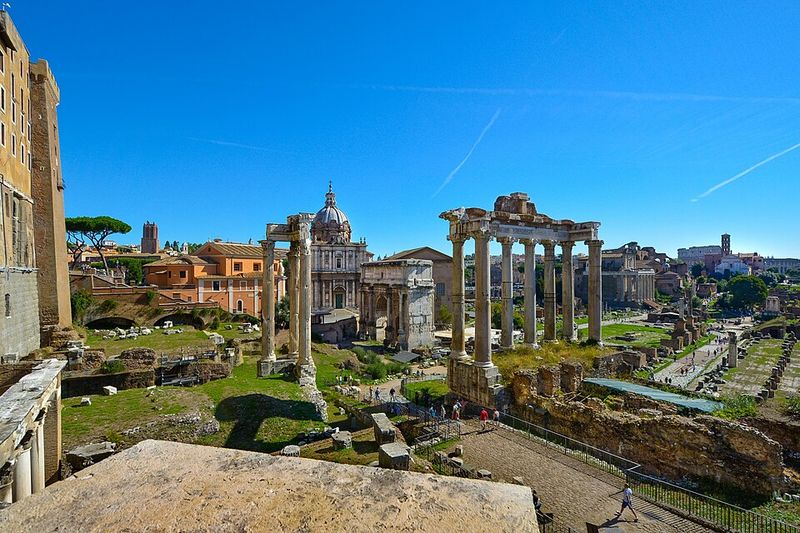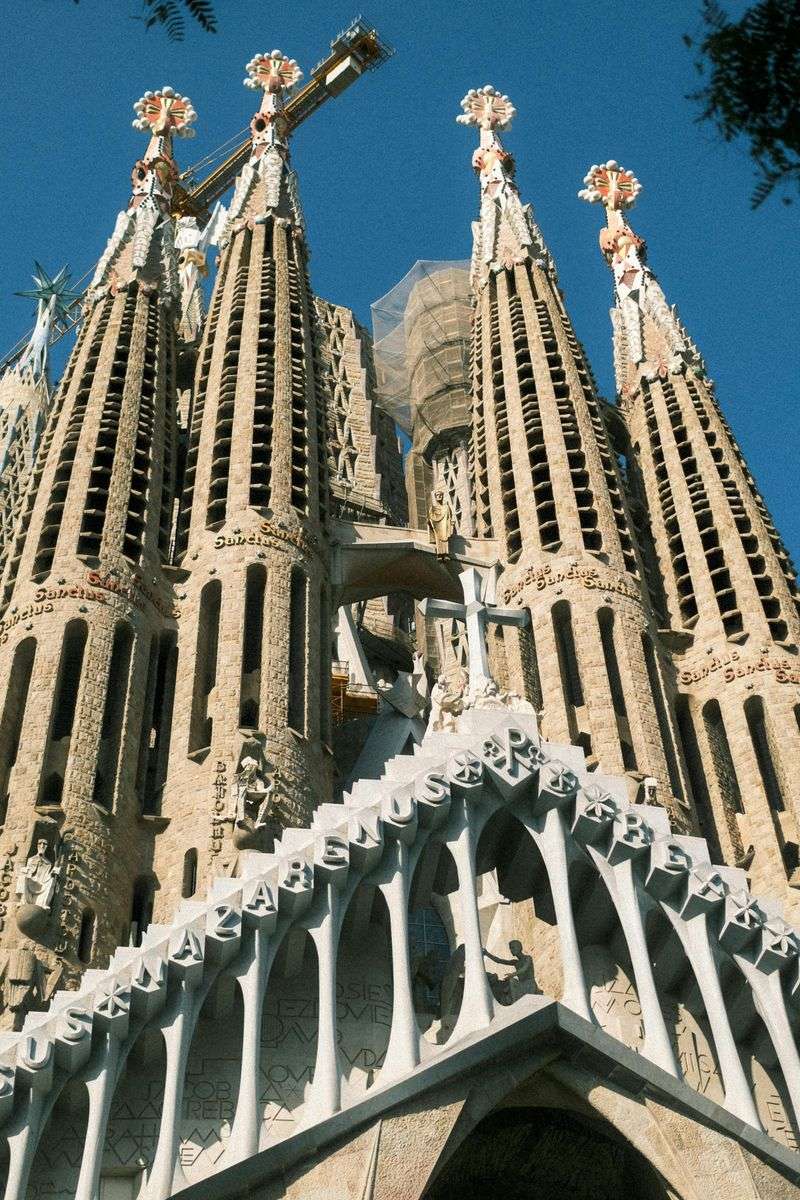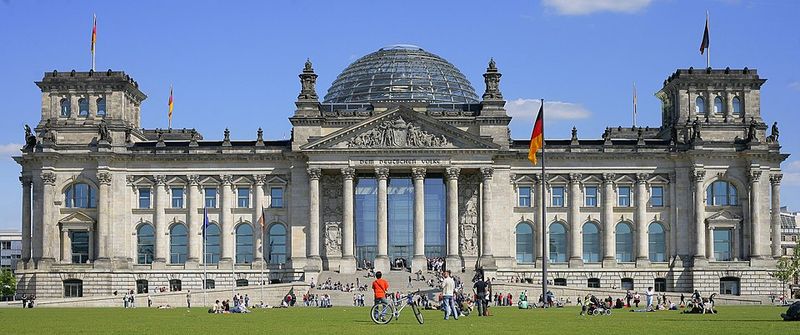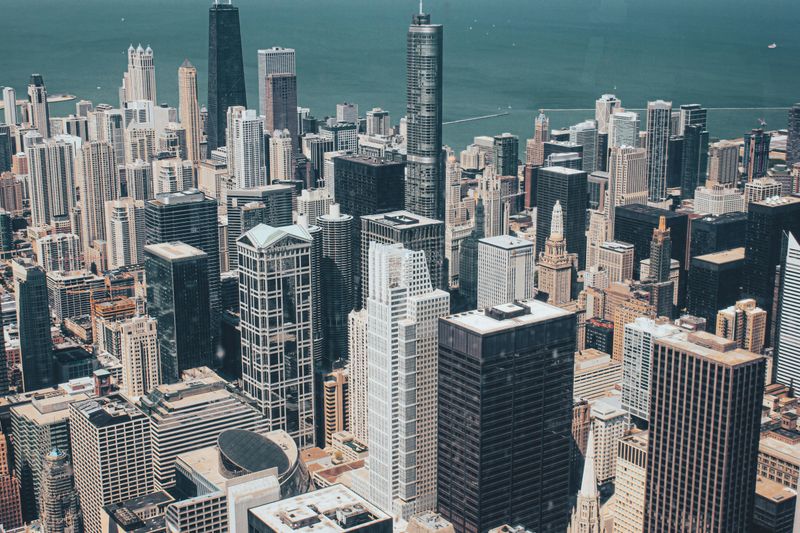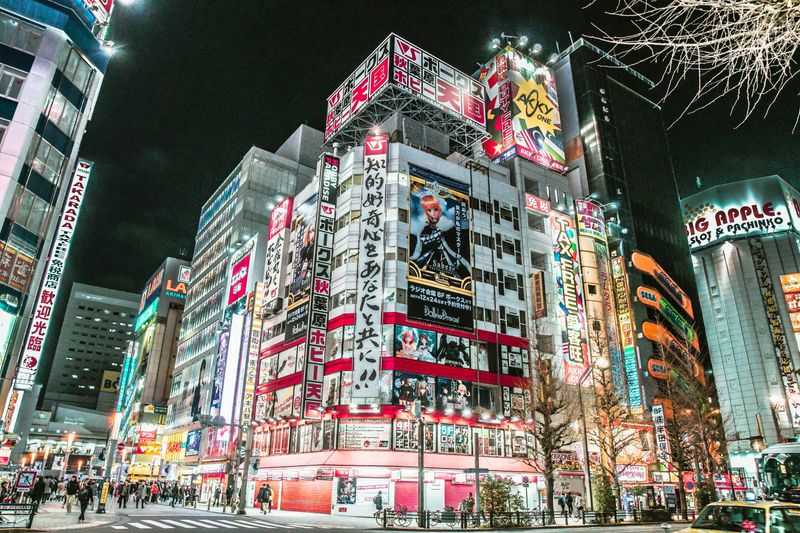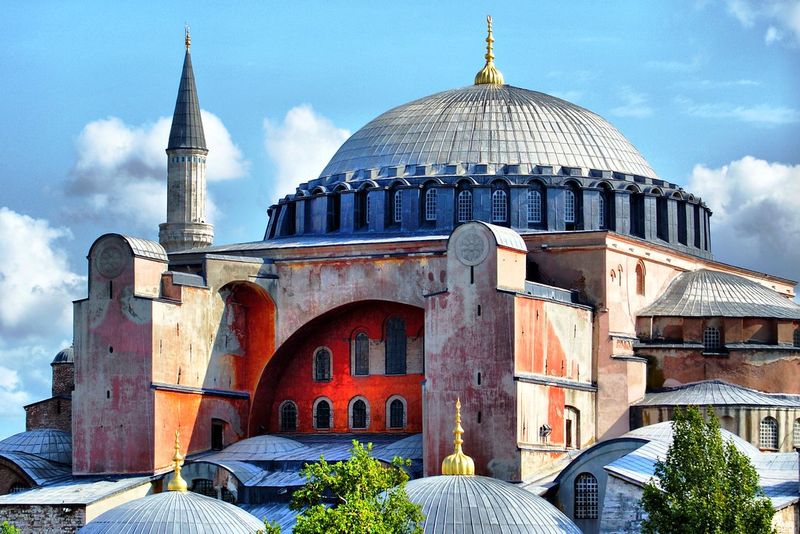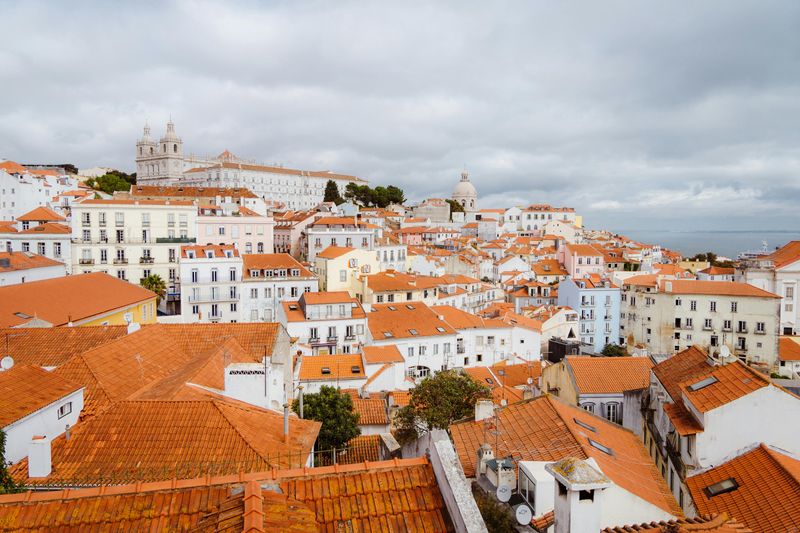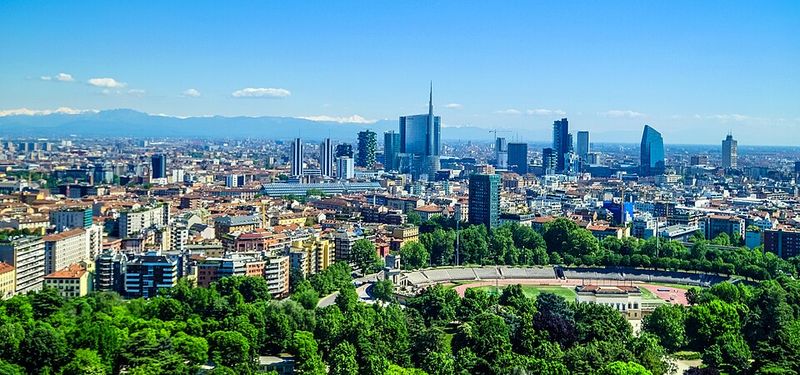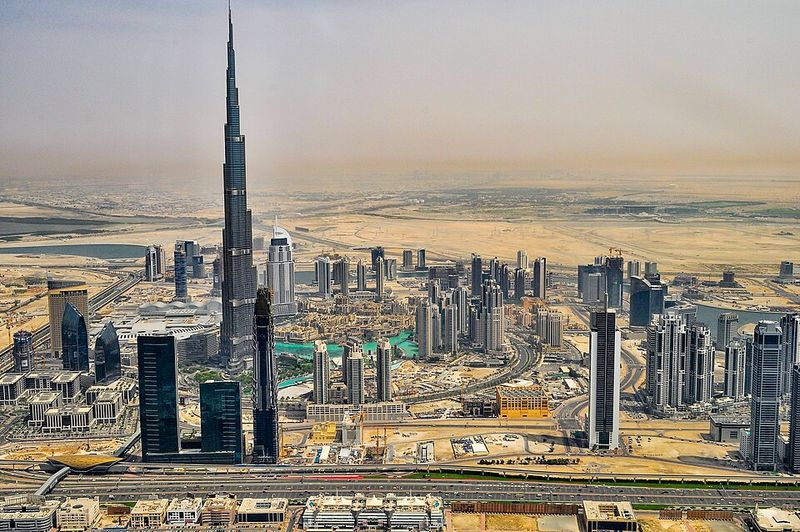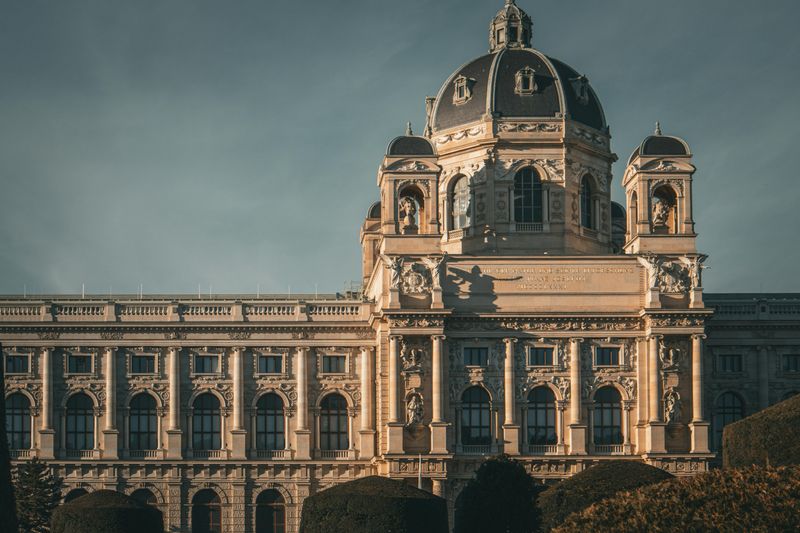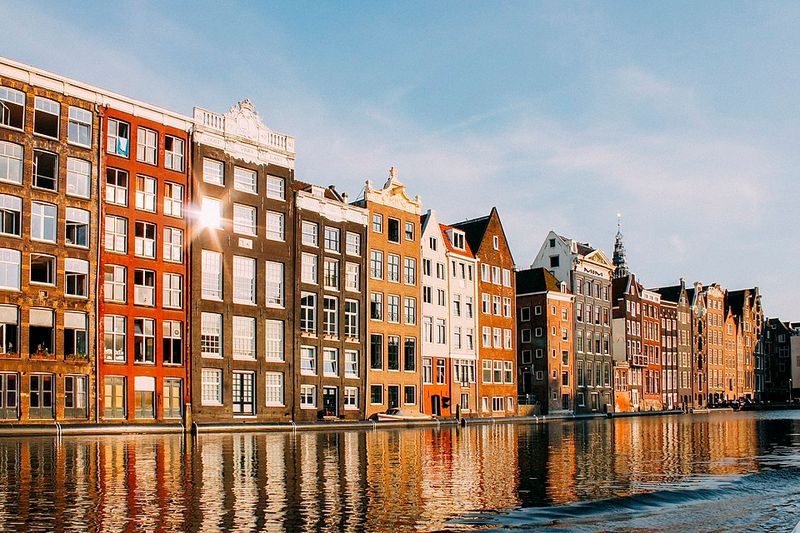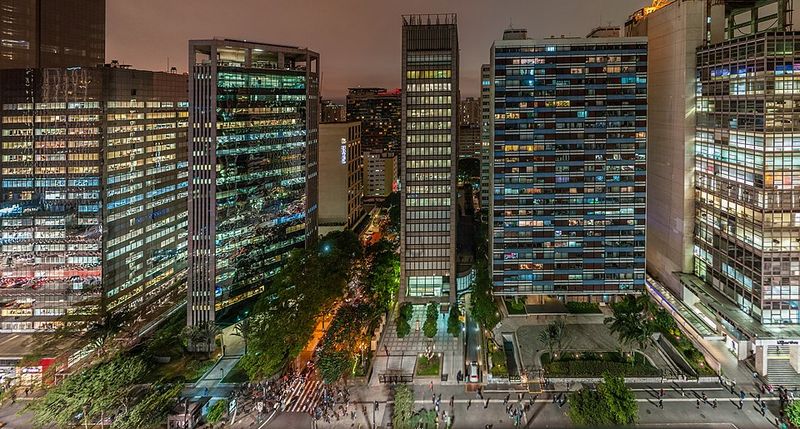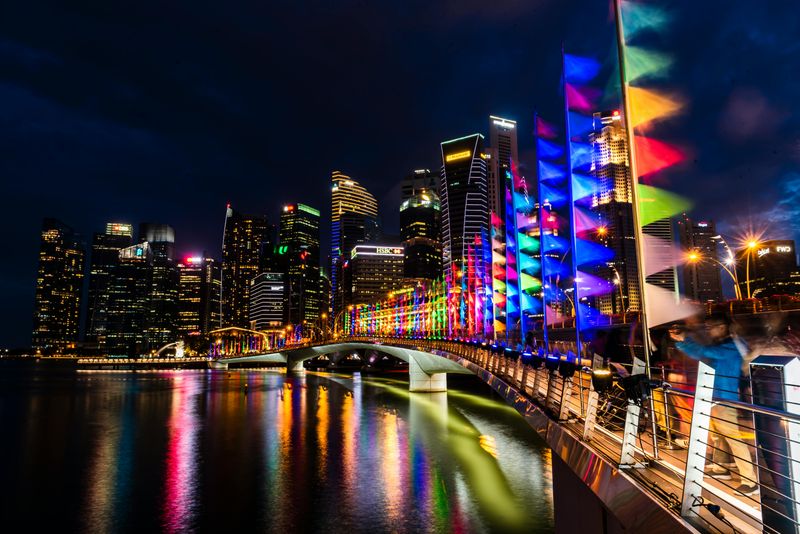Architecture tells the story of human creativity across centuries. Every city has its own design language—from ancient columns to glass skyscrapers—that reveals how people lived, dreamed, and built their world. Whether you’re fascinated by Gothic cathedrals, modern towers, or colorful mosaics, these fourteen cities offer unforgettable experiences for anyone who loves beautiful buildings and thoughtful design.
Paris, France
Step onto the cobblestones of Paris and you’ll travel through time. Notre-Dame Cathedral rises with soaring spires, while the Marais neighborhood winds through medieval lanes that feel like secret passages. Haussmann’s grand boulevards stretch wide and elegant, leading you to the glass pyramid at the Louvre Museum—a daring modern touch on a historic canvas.
What makes Paris unforgettable is how it layers centuries of design in one place. You can trace Gothic arches, Renaissance curves, Neoclassical columns, and contemporary glass all in a single afternoon stroll. Architecture lovers find it a living classroom where every corner teaches a new lesson in form and beauty.
Take your time exploring hidden courtyards, rooftop terraces, and ornate stairwells. Some of the city’s most inspiring details hide just above eye level, waiting for curious visitors to look up and discover them.
Rome, Italy
Rome isn’t just a city—it’s a 2,000-year conversation in stone. Ancient Roman temples stand beside Renaissance palaces, while Baroque churches add flourishes of gold and drama. The Colosseum, Pantheon, and Roman Forum anchor the past, but wander into Trastevere or the Aventine and you’ll find medieval churches and Renaissance villas tucked into quiet streets.
For anyone passionate about buildings, Rome offers an open-air textbook. You can study proportions in the Pantheon’s dome, trace urban planning in the Forum’s layout, and see how public spaces and structures interact across millennia. Architecture here isn’t frozen in museums—it’s alive in everyday streets and piazzas.
Slow down and observe the details: stonework patterns, column alignments, how light moves through arches at different hours. Rome rewards patient exploration with layers of meaning hidden in every corner.
Barcelona, Spain
Barcelona bursts with imagination. Antoni Gaudí’s whimsical curves and mosaic magic define the skyline—the Sagrada Família reaches toward heaven with organic towers, while Park Güell spreads color and fantasy across a hillside. But the city offers more than Gaudí: Gothic Quarter lanes twist through medieval history, and Art Nouveau façades line modern boulevards.
Walk the grid from the waterfront to Montjuïc and you’ll see how styles layer and evolve. Industrial-era redesigns meet contemporary additions, creating a dynamic urban landscape that never feels stale. For architecture enthusiasts, it’s invigorating to trace how form and ornament adapt across generations.
Sit at a terrace café and watch angular roofs catch Mediterranean light. Study façades up close, then step back to see how buildings speak to one another across streets and plazas.
Berlin, Germany
Berlin wears its history on its skyline. The neoclassical Brandenburg Gate stands proud, a symbol of reunification, while Museum Island gathers cultural treasures under historic roofs. Modern culture hubs like Berlin Central Station and the glass dome on the Reichstag show how the city embraced ambitious design after trauma and division.
For those who love architecture, Berlin is a lesson in resilience. Adaptive reuse transforms old factories into galleries, memorials mark painful memories, and avant-garde towers declare a bold future. Design here doesn’t just shape the skyline—it expresses identity, memory, and progress.
Explore neighborhoods where remnants meet reconstruction. Notice how buildings speak to social change, urban renewal, and the power of architecture to heal and inspire communities.
Chicago, USA
Chicago invented the modern skyscraper. Early steel-frame buildings rose from the ashes of the Great Fire, and architects like Louis Sullivan and Mies van der Rohe turned the city into a laboratory for vertical design. Today’s skyline mixes historic towers with sleek contemporary icons, creating a timeline of architectural innovation.
Architecture boat tours on the Chicago River offer front-row seats to this evolution. Cruise past the Loop district’s historic gems, then see how Millennium Park integrates public space with bold structures. The city teaches how buildings sit within their urban context—not just as individual objects, but as parts of a living whole.
Visit to understand how modern architecture took shape. Chicago’s story is about structure, form, and the ambition to build higher and smarter than ever before.
Tokyo, Japan
Tokyo thrives on contrast. Historic temples with curved roofs sit beside neon-lit commercial blocks, while sleek minimalist residences hide in narrow alleys beneath towering skyscrapers designed by world-famous architects. It’s a city that refuses to choose between old and new—it celebrates both with equal energy.
For architecture lovers, Tokyo delivers constant visual surprises. Timber-framed machiya houses share streets with cutting-edge gallery spaces, and thoughtful urban infill turns tiny lots into architectural gems. The city’s scale, density, and hybrid character make it endlessly fascinating to explore.
Wander through neighborhoods like Shibuya, Asakusa, and Omotesando to see how architecture adapts to culture, technology, and tradition. Every block offers a new lesson in how design responds to space and society.
Istanbul, Turkey
Istanbul straddles two continents and countless centuries. Byzantine domes like the Hagia Sophia anchor the historic peninsula, while Ottoman mosques add minarets and intricate tilework to the skyline. Wooden neighborhoods cling to hillsides, and modern transformation zones push glass towers toward the sky.
Architecture lovers find the layering irresistible. Old meets new in dramatic ways—minarets rise amid contemporary waterfronts, and ancient walls frame modern streets. The city shows how architecture evolves with social and political change, reflecting the complex identity of a place that bridges cultures.
Cross the Bosphorus by ferry and see how design anchors culture and time. Explore the historic peninsula on foot, then venture into newer districts to witness Istanbul’s ongoing architectural conversation.
Lisbon, Portugal
Lisbon unfolds like a storybook across seven hills. Medieval alleyways twist upward past colorful tiled façades, while seismic-era reconstruction gave the city its elegant grid. The Manueline richness of Jerónimos Monastery showcases Portugal’s Age of Discovery, and the Parque das Nações district adds sleek contemporary flair along the waterfront.
What makes Lisbon special is its approachable scale. You can walk from historic neighborhoods to modern museums in minutes, discovering pleasant surprises at every turn. Hill-top viewpoints offer panoramas of rooftops and the Tagus River, while calm seaside neighborhoods invite slow exploration.
For architecture enthusiasts, Lisbon delivers intimate detailing and deliberate planning in one walkable package. The city encourages you to look closely at tile patterns, ironwork, and how buildings adapt to steep terrain.
Milan, Italy
Milan moves fast, and its architecture keeps pace. The Milan Cathedral dazzles with Gothic splendor—thousands of spires and statues climb toward the sky—while sleek modern towers and experimental façades define newer districts. Known globally for design and fashion, the city wears its architectural ambition proudly.
Architecture lovers will appreciate how heritage and innovation coexist here. Historic courtyards open into glass atriums, high-end developments showcase cutting-edge materials, and city renewal projects transform industrial zones into cultural hubs. Milan reveals how architecture influences lifestyle and commerce in real time.
Visit design studios, explore the Brera district’s elegant buildings, and see how trade and built form converge. Milan is a city where architecture is very much part of daily life, shaping how people work, shop, and gather.
Dubai, UAE
Dubai asks, “What’s possible?” and then builds the answer. Towering structures like the Burj Khalifa pierce the sky, artificial islands reshape the coastline, and sculptural landmarks turn engineering into art. The city’s skyline is a testament to ambition, luxury, and the power of architecture as a branding tool.
For architecture enthusiasts, Dubai offers a glimpse into the future. The interplay of materials, engineering, and icon-making creates a unique urban experience. Skyscraper grammar here is bold and unapologetic, designed to impress and inspire.
Beyond the glitz, explore older districts and adaptive reuse zones to see contrasts. Dubai’s architecture tells a story of rapid transformation, where desert becomes city and tradition meets cutting-edge innovation in unexpected ways.
Vienna, Austria
Vienna glows with imperial elegance. Habsburg palaces spread across manicured gardens, Art Nouveau buildings curve with organic grace, and functionalist housing blocks from the 1920s show early social design thinking. The city layers tradition and innovation without losing its calm, refined character.
Architecture lovers will appreciate Vienna’s clarity. The ornate Secession movement brought new ideas to old forms, modernist U-Bahn stations turned transit into art, and the contemporary MuseumsQuartier proves that bold design can respect historic context. It’s less frenetic than some megacities, ideal for slow, reflective exploration.
Stroll through the Ringstrasse to see grand public buildings, then venture into neighborhoods where residential architecture tells quieter stories. Vienna rewards patient observation with beauty at every scale.
Amsterdam, Netherlands
Amsterdam floats on water and history. The canal-ring heritage—a UNESCO World Heritage site—showcases Dutch Renaissance façades with narrow, gabled fronts lining peaceful waterways. Modern residential designs and reclaimed land architecture show how the city continues to innovate while respecting its past.
For architecture lovers, Amsterdam offers clarity and evolution. You can trace design periods from 17th-century canal houses to 21st-century sustainable housing. Biking through neighborhoods, you’ll notice how architecture interacts with water, city form, and human scale in thoughtful ways.
Visit the Eastern Docklands to see contemporary housing experiments, then return to the historic center to appreciate how old and new coexist. Amsterdam is perfect for combining scenic design, heritage, and forward-thinking architectural ideas.
São Paulo, Brazil
São Paulo sprawls with energy and ambition. Modernist landmarks by architects like Oscar Niemeyer punctuate the skyline, while dynamic urban districts showcase sharp contrasts between high-rise commercial towers and modest residential blocks. The city is a living narrative of growth, social change, and design responses to density.
For architecture enthusiasts, São Paulo is an urban laboratory. Explore Paulista Avenue’s mix of corporate towers and cultural institutions, then move into neighborhoods where residential architecture adapts to climate, scale, and urban pressures. The city’s architecture reflects its complex identity—diverse, creative, and constantly evolving.
São Paulo doesn’t offer postcard-perfect scenes, but it rewards those willing to look deeper. Architecture here is about problem-solving, innovation, and the messy beauty of real urban life.
Singapore
Singapore reimagines what a city can be. Visionary urban planning meets landmark architecture: cutting-edge skyscrapers rise beside garden-inspired buildings where greenery climbs vertical walls. Forward-looking infrastructural design turns transit hubs into elegant public spaces, and a compact footprint becomes a showcase for global architects.
For architecture lovers, there’s much to admire. Watch how design merges nature and built form, how tropical climate influences structure, and how a small island nation becomes a leader in sustainable urbanism. Marina Bay’s skyline dazzles, while neighborhoods like Tiong Bahru offer Art Deco charm.
Singapore demonstrates that architecture can be both beautiful and functional. The city’s attention to detail, care in integration, and commitment to green design make it a must-visit for anyone interested in the future of urban living.
